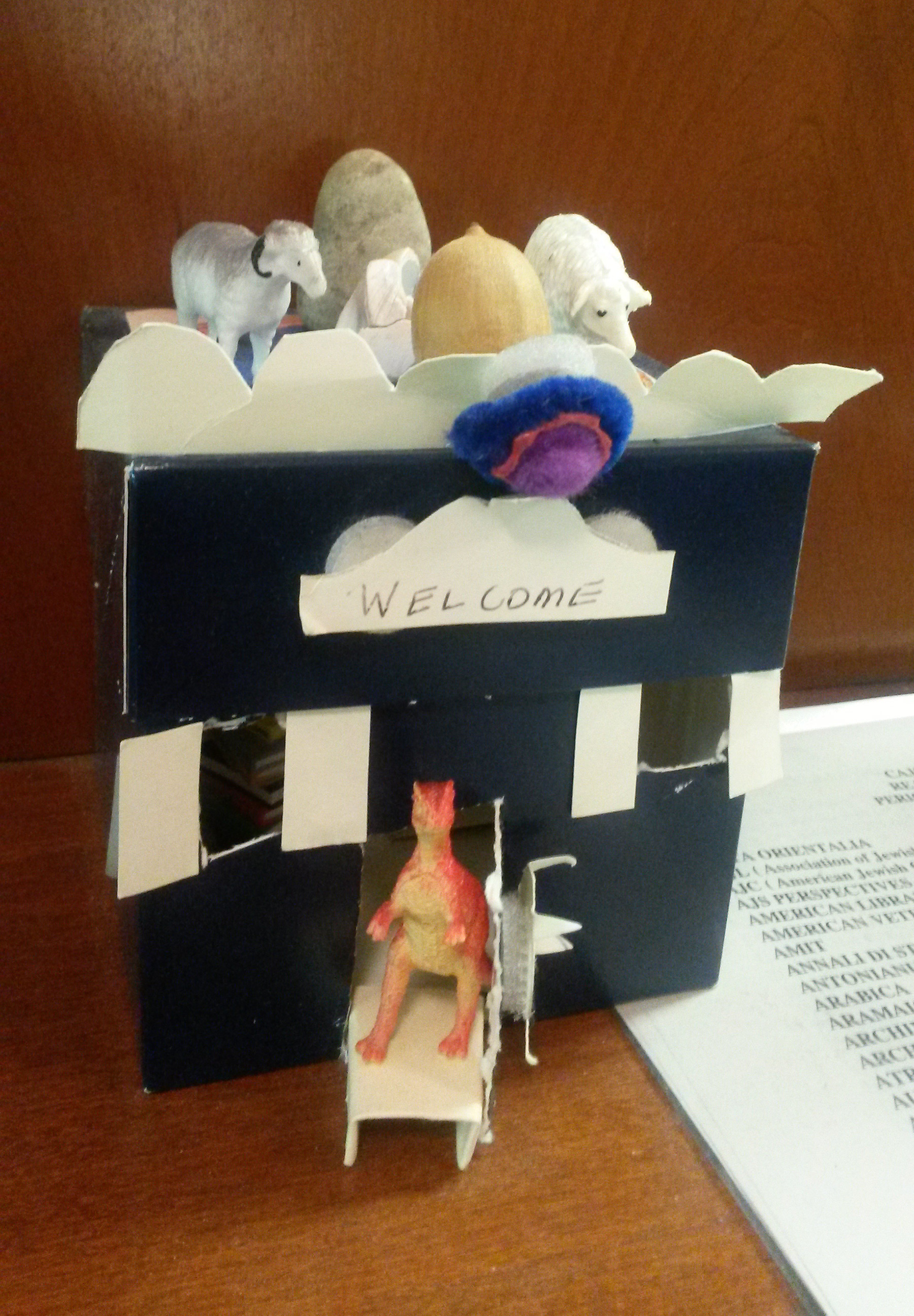There are tense relations between the paper-house built by Josef Gulka, the circulation/stack manager at the Library at the Katz Center, and the objects around it. In an environment full of texts, at least some of them rare, most of them grappling with the very essence of Judaism between past and present, his small paper-house seems out of place. It has plastic lambs on top of it, a dinosaur in the front of it, and the caption "welcome" above it. The paper-house subtly interferes with the task-oriented interaction a patron might have with this library-man by provoking an unexpected smile and a question mark by its curious presence on the counter by his desk. Small enough to be ignored, yet present in a way that may justify a pause in the formal exchange with the library-man, it invites special attention and in so doing the power of the paper-house becomes clear. Serious-not-serious, formal-informal at one and the same time, Gulka's decorative piece is a unique representation of the powerful meaning of the library in our academic life. Using symbols of sacrifice and belief, yet carrying the tenuous quality of being made from simple paper, the little house has created an interesting "flirt" between Judaism and Christianity, and between fellows and staff members. It highlights and bridges the threshold between hostility and hospitality (as Gulka himself has put it). While being exposed to multiple readings, as any other objected located in the public sphere, Gulka's piece also has marked the common denominator between all of us: books. Yes, just accepting the invitation, "welcome," and taking an intimate look into the inside of the little house, you immediately see: books. The power of the library, after all, has been once again expressed.
Which exhibit?
Page: Featured item
Short name for this entry
The House
Order on exhibit page
4
Turn off the details link on the exhibit page
Off
